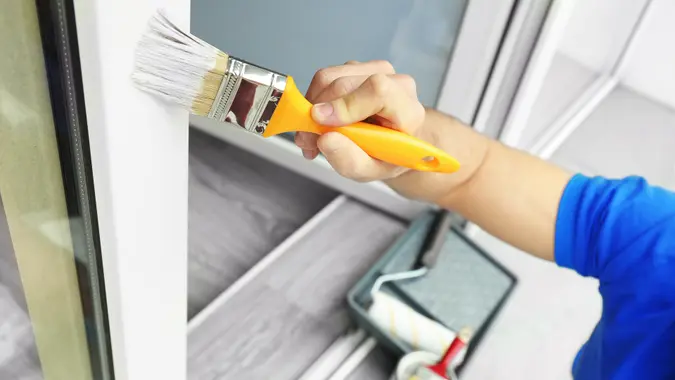4 Driving Habits That Could Be Costing You Big Money

Commitment to Our Readers
GOBankingRates' editorial team is committed to bringing you unbiased reviews and information. We use data-driven methodologies to evaluate financial products and services - our reviews and ratings are not influenced by advertisers. You can read more about our editorial guidelines and our products and services review methodology.

20 Years
Helping You Live Richer

Reviewed
by Experts

Trusted by
Millions of Readers
Driving a vehicle is costlier than ever in 2024. According to the AAA “Your Driving Cost” study, the cost to own and operate a new vehicle is $1,024.71 per month, up by $115 since last year. These costs include car payments and finance charges, gas, maintenance, and vehicle depreciation. Of course, it also costs money to own and operate an older car; the money you save in car payments you might spend in repairs or gas, since a vehicle loses fuel efficiency as it ages.
Costs related to driving are inevitable. But you might be spending even more than you have to if you regularly practice these driving habits.
Speeding
It’s no secret that speeding is dangerous. The National Highway Traffic Safety Administration reported that speed was a contributing factor in 29% of motor vehicle crash fatalities in 2021 (the most recent year for which data is available). But did you know: In addition to the danger and the potential costs associated with speeding tickets, you are burning more gas when you drive faster?
The folks at Wired did some extensive calculations to find that, if you factor in the price of gas along with the cost of your time spent driving, the optimal speed for a daily highway commute is 66 mph. Since many parts of the U.S. have speed limits of 65 mph on major highways, this is a safe enough speed to avoid tickets. Of course, you should always follow posted speed limit signs. According to fueleconomy.gov, you’ll experience the most drag (wind resistance) when you drive faster than 80 mph.
Rapid Acceleration and Braking
Do you drive with a heavy foot on the accelerator, rushing to catch up with the car behind you in traffic, only to slam on the brakes once you catch up?
One MIT study, reported by the Department of Energy, found that rapid acceleration and braking, along with speeding, also lowers fuel economy by 15% to 30% at highway speeds — and 10% to 40% in stop-and-go traffic. In addition to increased fuel consumption, you’re likely to wear out your brakes faster, which requires a costly repair.
Driving Until Your Gas Tank Reaches E
It’s easy to procrastinate on fueling up, even as your gas gauge needle dips into the red zone and your gas light comes on. Maybe you don’t have the time to pump gas, or maybe it’s cold or raining out. Experts say it’s much better to fill up before your fuel level reaches the mid-way point, however. Running on “e” for too long puts unnecessary wear-and-tear on your fuel pump and fuel filter. The pump must work harder when fuel levels are low, according to AAA, which means it runs at a hotter temperature and may wear out faster.
Additionally, when you run the tank nearly empty, sediment at the bottom of the tank can get stuck in your air filter, clogging it.
Letting Your Engine “Warm Up” or Idle for Too Long
Vehicles have not had to “warm up” since pre-1980s carburetors have been replaced by sophisticated fuel management systems. When you leave your car parked and idling prior to driving, you’re burning extra gas — and also stripping away oil from the engine’s pistons and cylinders, which can shorten your engine life.
Jake Scheafer — service director at Smart Motors, a Toyota dealer in Wisconsin — said via the dealer’s blog, “Under normal wintertime circumstances, idling your car or truck for about 30 seconds is all it takes to get the engine above 40 degrees; ideal for typical operation.”
By the time you put your coffee in the cupholder and your phone in your phone holder and buckle up, the car should be ready to drive.
More From GOBankingRates
 Written by
Written by  Edited by
Edited by 

























